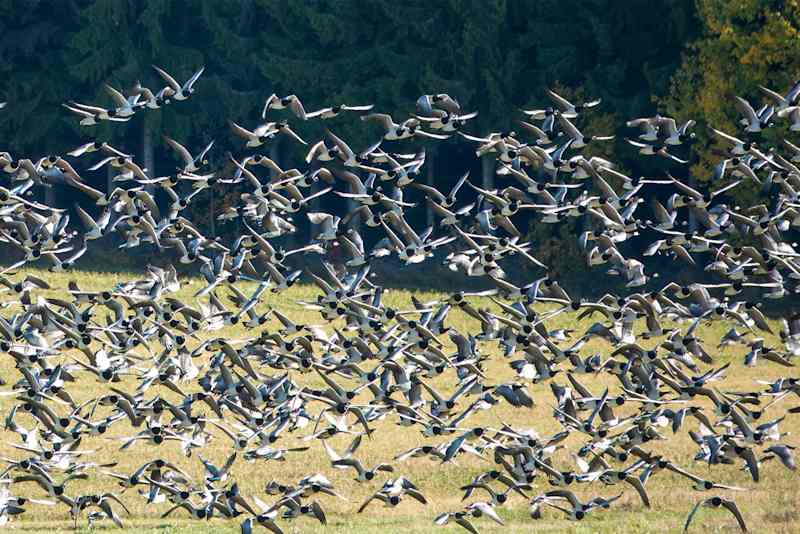Moving the white geese to the north, the main migration is still coming

There are already over 200,000 white -tailed geese in Finland on the way to the breeding grounds. There are already tens of thousands of geese in North Karelia. The main migration is ahead, as long as the weather warms.
The spring migration of white-tailed geese is rapidly picking up, the ELY Center in North Karelia reports.
The first wave of birds flew to Finland on May Day and the second wave came a couple of days later, May 3.
Last Saturday in Luumäki, South Karelia, the biggest reading of the day, 34,400 migrants, was calculated.
In Finland, the largest gatherings on the same day were seen in the Parikkala municipality, where 50,000 resting and eating white -tailed geese were roughly observed.
The white-tailed geese of each wave landed at the latest in North Karelia. One of the geese with a GPS transmitter is in crystal.
Migration weather will improve next week
The ELY Center estimates that more than 200,000 white geese are now eating in the fields of Southern and Eastern Finland.
The total number of total in southern or North Karelia has almost 150,000 white geese. In North Karelia, more than 10,000 goose gatherings have already been observed in the fields.
The main migration to the breeding grounds has not happened and many geese are still coming, with the Barents Sea breeding stock of about 1.4 million white geese.
As the cold upwind flow in Finland decreases and the weather is predicted by the Finnish Meteorological Institute, the week after Mother’s Day is warming up, geese migration boards improve.
On the other hand, the migration of birds towards the Worning Sea is slowed down by the fact that there is still little green arable vegetation in Karelia. As a result, birds stop easily to rest into large flocks.
The North Karelia ELY Center and BirdLife Finland follow the move of white-tailed geese from wintering areas to Finland and forward.
